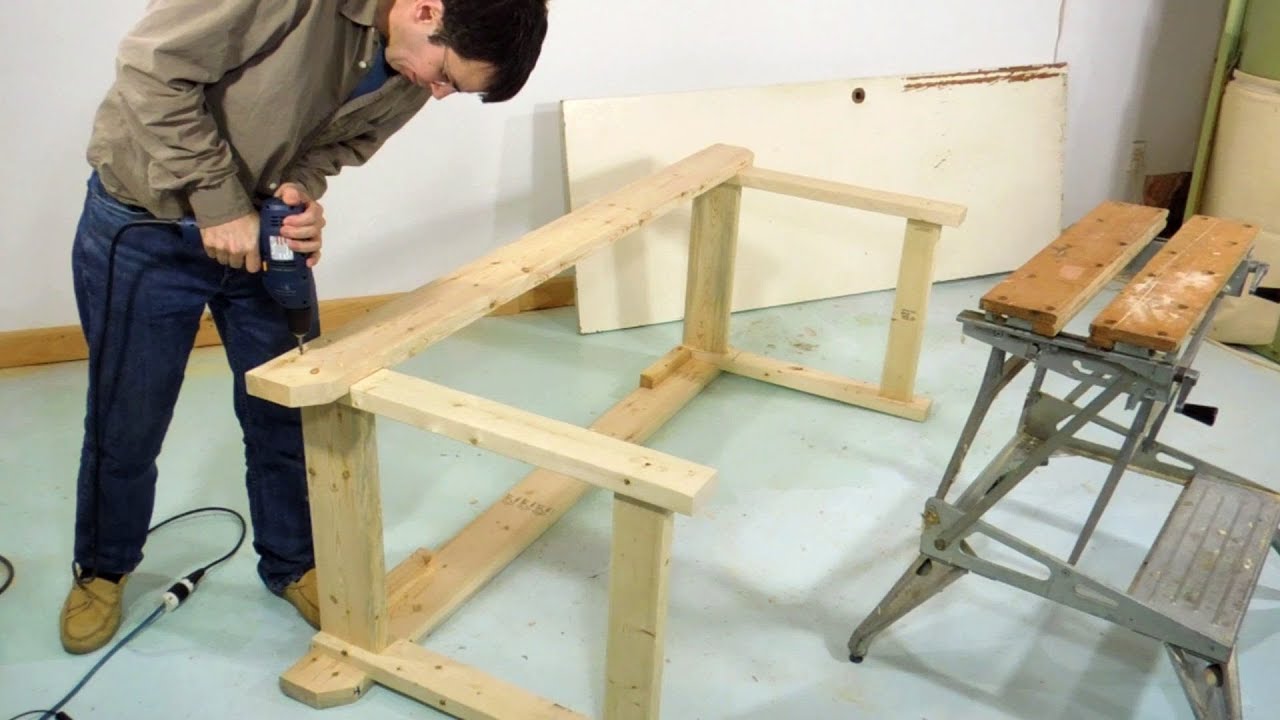Still for 2.5D work, flat is also really nice to have.
There are a lot of ways to make a flat assembly table. One of the most common is to make a torsion box. That is, a box with a “skin” on both top and bottom with a latticework inside. If you start with a good flat material, it will result in a very rigid surface. This might not be perfectly flat, but it will be close.
My last assembly table, I used a laser level and a ruler to spot check the frame at each junction of the torsion box, made adjustments, then glued and screwed it all together.
For my MPCNC, I’m starting a new torsion box, but I’ll just surface it with the CNC, so it’s probably not super critical, and in fact probably won’t really be flat when it’s done, as it will instead just conform to the CNC rails and gantry, all of which probably have some sag to them.
As a build surface, MDF has a lot going for it. It’s consistent, easily machinable, relatively inexpensive, and smooth. It’s downsides are that it’s very sensitive to moisture, and relatively soft.
Plywood is lighter than MDF, and generally stronger. It is more resilient against moisture. It also makes a good build surface.
Of the two, I most often end up with MDF, simply because of its versatility, and the fact that it’s so difficult to get an unwarped sheet of plywood at the local lumberyards. The only stuff that stays straight is furniture grade stuff, which is far more expensive.




